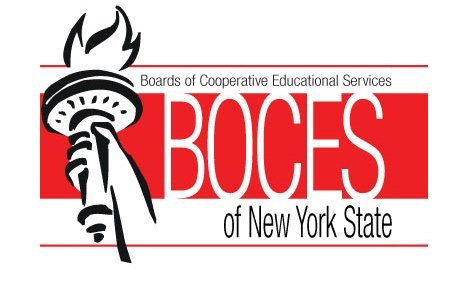District Profile
- Nearly 33,000 students
Norwich, New York
A consortium of districts serving nearly 33,000 students, the Delaware-Chenango-Madison-Otsego (DCMO) BOCES has involved more than 500 teachers and administrators in Math Solutions inservice since summer 2000. In September 2003, the BOCES published an in-depth analysis of the impact of Math Solutions professional development using student test score data, surveys, interviews, and classroom visits. Maureen McGuire, Coordinator for Planning and Development, and Tonda Dunbar, Coordinator for Staff and Curriculum Development, summarized their findings:¹
The fourth-grade math scores from 2000 to 2003 showed a slight but steady increase on the Elementary Math State Assessment:
More than 45 percent of all teachers in the seven districts on the Most Improved Schools list attended at least one Math Solutions course. Of those seven districts, four have seen growth in the percentage of students achieving at levels three and four (the highest levels) over the past one to two years. At 11 of the districts, more than 45 percent of their middle school teachers attended at least one Math Solutions course. Eight of those 11 districts have seen growth in the percentage of students achieving at levels three and four (the highest levels) over the past one to two years. (Scores reported by the DCMO Supervisory District.)
Teacher survey evidence indicated that every experience teachers had during the inservice was consistently being relayed to students, benefiting their learning of math. The survey revealed that teachers:
- have enthusiasm and support for a new approach to teaching math;
- make connections between the use of manipulatives and how they enhance student understanding of key concepts and ideas;
- recognize the presence of mathematics in other content areas and impart excitement about engaging their colleagues in collaborative teaching endeavors;
- use more questioning and emphasize problem solving in the classroom; and
- provide students opportunities to write about their mathematical thinking.
Teachers interviewed discussed their learning in terms of student learning. They agreed to take responsibility for learning more about connecting math with other disciplines, incorporating writing into math, and providing students with greater autonomy in creating strategies for solving problems. Teachers maintained clear ideas for what they hoped to accomplish in terms of their instruction and their students’ learning. Teachers reported that students are more willing to try their ideas for solving problems; writing responses and explaining relationships has improved their understanding of concepts; students enjoy working together; and they discover more mathematics themselves. Of vital importance, the interviews summarized that there is far more discussion about the teaching and learning of mathematics than before Math Solutions inservice was presented in the region.The authors of the report also collected comments and reactions from administrators:
One of our middle schools has seen an increase in math awareness since participating in Math Solutions—teachers have been provided a whole new tool box of strategies, which has allowed us to break out of the traditional mode of instruction.
Math CoordinatorAs a result of teachers’ modifications in their instructional approaches, students are now involved in higher-order thinking and problem-solving activities.
Principal
Kindergarten through grade eight students were also polled, and in one informal discussion held with students, they described the positive feelings they experienced when they were able to find answers their own way, rather than only one way.
School and classroom visits revealed much cooperative grouping for learning activities. The report concludes, “There is no question that Math Solutions has done wonders for the discussion and thinking that can happen (and does) around mathematics. Teachers and administrators agree that they have experienced an increase in student engagement in math lessons and activities and an increased motivation for learning.”
Additional report findings indicated that an overwhelming majority of teachers and administrators in the study believe that Math Solutions has made positive contributions to the teaching and learning that occurs around mathematics; significant progress has been made in the frequency and quality of discourse surrounding the teaching and learning of mathematics; and enthusiasm for Math Solutions and the desire to implement it as it was experienced at the course is high.
Overall, the report indicated that Math Solutions creates interest and excitement for teaching math and urged participating teachers and those who lead them to continue to seek ways to sustain the energy and ongoing support brought by being immersed in the inservice itself. The authors noted, “Follow-up activities are one solution to ensure ongoing discussion and dialogue. We must also build systems and supports into our schools that will sustain the enthusiasm and provide the feedback that teachers respond to so well after they’ve learned new strategies, techniques, and approaches. This will help teachers recognize the relevance and impact of their learning on their practice and, ultimately, on their students.” Realizing the importance of follow-up, the BOCES supported teachers’ participation in two local Math Solutions courses in summer 2004.
1. McGuire, M., and T. Dunbar, “Math Solutions Evaluation: Analyzing the Impact of Professional Development” (DCMO BOCES, September 2003).

 All District Case Studies
All District Case Studies 